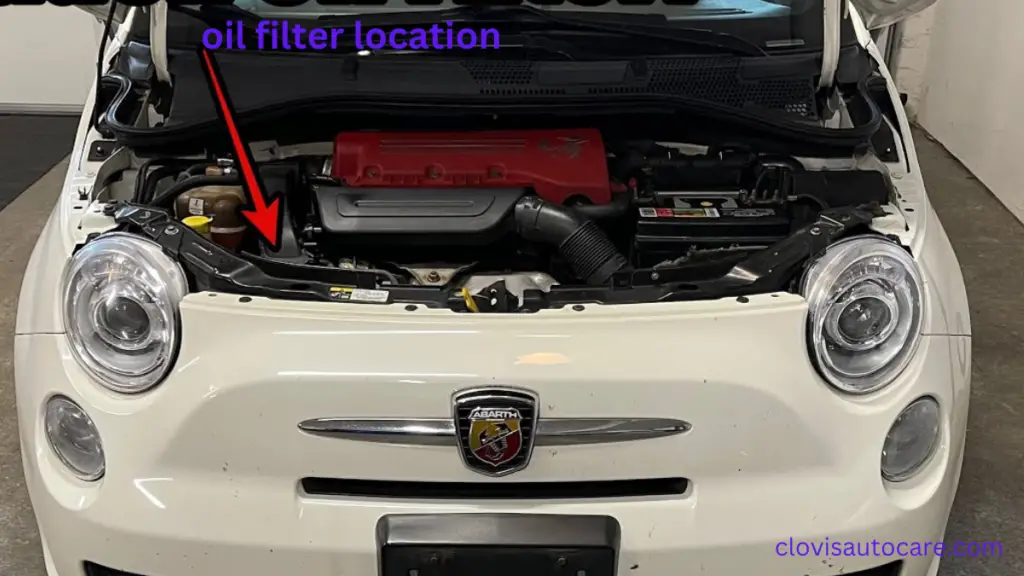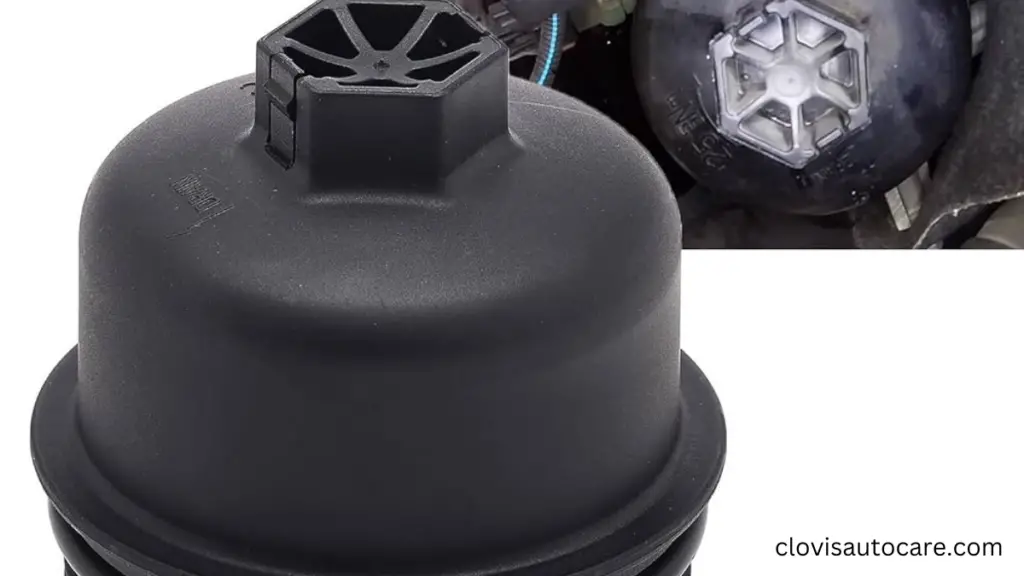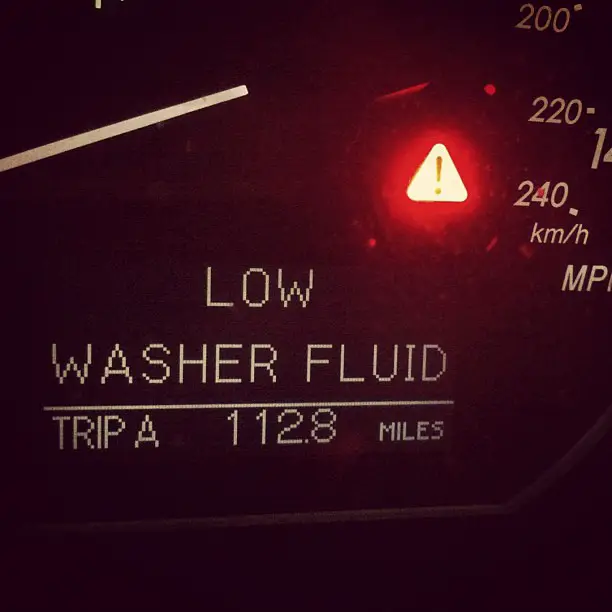Fiat 500 Oil Filter Location! You’re cruising down the road, the wind gently tousling your hair and the unmistakable charm of your Fiat 500 enveloping you. As a proud owner or potential buyer, you understand the importance of maintaining this Italian masterpiece. One crucial aspect of keeping your Fiat 500 in prime condition is changing the oil and oil filter regularly. In this article, we’ll uncover the secrets of the Fiat 500 oil filter location, empowering you to take charge of your vehicle’s maintenance and experience the many benefits that come with it. still here; let’s go.

Contents
Why Changing the Oil and Oil Filter Matters
Changing the oil and oil filter in your Fiat 500 is not just a routine maintenance task; it’s a gateway to unlocking an array of benefits that enhance your driving experience and save you money in the long run. Let’s explore the key advantages:
1. Improved Engine Performance
Fresh oil and a clean oil filter ensure optimal lubrication, reducing friction and wear on engine components.
This translates into smoother operation, enhanced fuel efficiency, and a noticeable boost in performance.
Experience the joy of a Fiat 500 that purrs like a contented feline, responding eagerly to your every command.
2. Extended Engine Lifespan
By regularly changing the oil and oil filter, you protect your engine from harmful contaminants that accumulate over time.
These contaminants, such as dirt, metal particles, and sludge, can cause damage and reduce the engine’s lifespan.
With clean oil and a fresh filter, you provide your Fiat 500’s heart with the care it deserves, ensuring it serves you faithfully for years to come.
3. Cost Savings on Maintenance
Taking charge of your oil changes means saving money on frequent trips to the mechanic.
By investing a little time and effort into learning this simple DIY task, you can avoid unnecessary service costs and allocate those funds toward other exciting adventures with your Fiat 500.
Imagine the satisfaction of maintaining your vehicle’s health while keeping some extra cash in your pocket. Section

When to Change the Fiat 500 Oil Filter
The oil filter is an essential component of your Fiat 500’s engine. It removes dirt, debris, and contaminants from the oil that lubricates and cools the engine parts.
A clean oil filter ensures optimal engine performance and fuel efficiency, as well as prevents engine damage and costly repairs.
The manufacturer recommends changing the Fiat 500 oil filter at every regular oil change interval, which is based on the type of oil you use and your driving conditions.
Most expert mechanics suggest changing the filter about every 5,000 miles or 6 months, whichever comes first. However, you may need to change the filter more often if you drive in dusty or dirty environments, make frequent short trips, or tow heavy loads.
Some signs that indicate it’s time for an oil filter change include the following:
- The maintenance reminder light comes on. This is a dashboard indicator that tells you when your vehicle needs service, including oil and filter changes. You can reset the light after you change the filter by following the instructions I will provide below.
- You’ve driven over 5,000 miles since the last oil change. This is a general guideline for most vehicles, but you should check your owner’s manual for the specific oil change interval for your Fiat 500 model and year.
- The engine oil looks dirty or discolored. You can check the condition of your oil by pulling out the dipstick and wiping it with a clean cloth. If the oil is black, brown, or cloudy, it means it is contaminated with dirt and needs to be changed along with the filter.
- You notice oil leaks near the filter area. This could be a sign of a loose, damaged, or clogged filter that is causing oil to leak out of the engine. You should inspect the filter and its seal for any cracks, holes, or wear, and replace them if necessary.
- Unusual engine noises or changes in performance. If you hear knocking, rattling, or grinding sounds from the engine, or if you experience loss of power, rough idling, or stalling, it could mean that your oil filter is not working properly and is allowing dirt to enter the engine. This can cause friction, heat, and damage to the engine components. You should change the right filter as soon as possible to prevent further problems.
Unveiling the Fiat 500 Oil Filter Location
Now that you understand the benefits, let’s uncover the location of the oil filter in your Fiat 500. The oil filter is conveniently located.
For Fiat 500 owners, performing an oil change is a task that can be done at home with the right knowledge and tools.
One of the key components to replace during an oil change is the oil filter, but its location can be a bit elusive for those unfamiliar with the vehicle’s layout.
The oil filter in the Fiat 500 is not immediately visible when you pop the hood, as it’s tucked away behind other engine components.
To access the oil filter in the Fiat 500, you need to first locate the oil filter canister. It is situated directly behind the radiator on the right side of the engine compartment. It sits vertically between the engine block and the front right wheel well. when standing in front of the car, which is the passenger side in the United States.
Contrary to what some might think, the oil filter is accessed from the top of the engine bay, not from underneath the vehicle.
The oil filter canister is a black, dome-shaped plastic piece with a 27mm hex extension in the center.
A molded shield on its upper right partially obscures it, which can make accessing it a bit challenging. To remove the oil filter cap, you’ll need a 27mm socket with a ratchet handle.
Due to the limited space and the presence of hoses in the way, care must be taken not to damage the plastic canister during removal.
Some Fiat 500 owners have found success in reaching the oil filter canister with a long extension and swivel without removing any panels or air cleaner components.
However, this approach may not work for everyone, as the space is quite tight and the risk of damaging the plastic hex head is higher.
Additionally, the large size of a 27mm socket can add length to your wrench setup, potentially complicating the process further.
It is recommended to remove the airbox to gain better access to the oil filter canister. This involves loosening a few bolts and detaching hoses connected to the airbox.
Once the airbox is moved aside, you will have clearer access to the oil filter canister and can proceed with the oil filter change.
Remember, when changing the oil filter, it’s also a good opportunity to inspect the condition of the rubber O-ring on the cap and lubricate it with fresh oil before reinstallation.
This ensures a proper seal and prevents potential oil leaks.
Always take caution when working with engine components and ensure the vehicle is safely supported if you need to work underneath it.
Taking the time to properly locate and change the oil filter will help keep your Fiat 500 engine running smoothly.
Just be sure to dispose of the old oil and filter it properly. And remember to reset your oil change reminder light when finished!
Fiat 500 Reset Change Engine Oil
To reset the oil change light on your Fiat 500, follow these steps:
- Step 1: Turn on the ignition. Insert the key into the ignition slot and turn it two clicks to the right. This will power the vehicle’s electrical system, but not the engine. You should see the dashboard lights come on, including the oil change light.
- Step 2: Press the accelerator pedal three times. Within 10 seconds of turning on the ignition, press the accelerator pedal all the way down to the floor three times in a row. Make sure to fully depress the pedal each time, as this will signal the vehicle’s computer that you want to reset the oil change light.
- Step 3: Turn off the ignition. After pressing the accelerator pedal three times, turn the key back to the left to turn off the ignition. You should hear a beep or see a message on the display confirming that the oil change light has been reset.
- Step 4: Start the vehicle and check the light. Start the engine and look at the dashboard. The oil change light should be off, indicating that the reset process was successful. If the light is still on, you may need to try again, making sure to follow the steps correctly and quickly. If the light does not go off after several attempts, there may be another problem with the vehicle, and you should consult the manual or a mechanic for further guidance.

Alternatives to DIY Fiat 500 Oil Filter Changes
While changing the oil filter yourself can save money, there are some benefits to having it done professionally:
- Mechanics have the expertise to properly dispose of oil and filters.
- There is no risk of accidental engine damage from DIY mistakes.
- Diagnostic checks can identify other issues when serviced.
- The convenience of having someone else handle the messy job
- Peace of mind from a professional maintenance shop.
However, DIY oil changes only require basic mechanical skills and can still offer big savings versus shop prices. Just be sure to follow all precautions and instructions closely Here is a guide
- Get Your Stuff Ready: Before you start, make sure you have everything you need. You’ll need a wrench set, an oil filter wrench, a new oil filter, new engine oil, usually 5 liters (check your owner’s manual for the right kind and amount), a drain pan, and maybe a jack with jack stands or ramps to lift the car.
- Warm Up the Engine: It’s a good idea to run the engine for a few minutes to warm up the oil, which makes it easier to drain.
- Lift the Car: Lift the car safely using a jack and jack stands or drive it up onto ramps. Make sure the car is steady before you go under it. unscrew the six 10mm bolts on the protector, then
- Find the Oil Drain Plug and Oil Filter: Go under the car and look for the oil drain plug and oil filter. The drain plug is usually at the bottom of the engine’s oil pan, and the oil filter is situated directly behind the radiator on the right side of the engine compartment.
- Drain the oil. Put the drain pan under the oil drain plug. Use the right-size wrench to remove the drain plug. Let the oil drain completely into the pan. Watch out; the oil might be hot.
- Put Back the Oil Drain Plug: When the oil is drained for about 5–10 minutes, put back the drain plug and tighten it well, but don’t overdo it and mess up the threads.
- Take Out and Put in the Oil Filter: Use the oil filter wrench to take out the old oil filter. Before you put in the new filter, put some fresh oil on the rubber seal of the new filter. This helps make a good seal. Then, screw the new filter in place by hand. Don’t overtighten it, either.
- Put in new oil. Find the oil filler cap on the top of the engine. Take off the cap and put in the new oil using a funnel. Put in the amount that the manufacturer says, which is usually around 4 to 5 liters (but it can be different).
- Check Oil Level: After putting in oil, wait a few minutes to let it settle. Take out the dipstick, wipe it clean, put it back in, and then take it out again to check the oil level. It should be in the marked area on the dipstick.
- Start the Engine: Before you’re done, start the engine and let it run for a minute. This moves the new oil around and lets you check for any leaks. Turn off the engine and check the oil level again after a few minutes to make sure it’s still right. Screw back the six 10mm bolts of the protectors underneath.
- Get Rid of Old Oil: Get rid of the old oil and oil filter the right way. Many auto parts stores or service stations will take used oil for recycling

Conclusion
Congratulations! You’ve unlocked the secrets of the Fiat 500 oil filter location and discovered the many advantages of changing the oil and filter yourself. By taking control of this essential maintenance task, you’ll experience improved engine performance, an extended engine lifespan, and significant cost savings. So, why wait? Embrace the power of DIY maintenance and give your Fiat 500 the love and care it deserves.
Are you ready to embark on the journey of DIY oil changes for your Fiat 500, enjoying the benefits of improved performance, longevity, and savings?
FAQs
1. What type of oil filter does a Fiat 500 use?
Most models use a standard, spin-on oil filter between 20 and 27mm in size. as long as the filter meets your car’s specifications and you’re changing your oil at the recommended intervals, you should be okay with the FRAM filter
2. Do I need a special tool to remove the Fiat 500 oil filter?
An oil filter wrench or cap wrench works best to grip and turn the filter.
3. How do I know if my new oil filter is on tightly enough?
Only tighten by hand to the torque spec listed in the manual. Do not overtighten.
4. Can I change my Fiat 500 oil without replacing the filter?
It’s not recommended. The filter should be replaced at every oil change interval.
5. What happens if I use the wrong oil filter on my Fiat 500?
An improper filter can cause oil leaks or engine damage. Always use the correct part number filter.




Leave a Reply